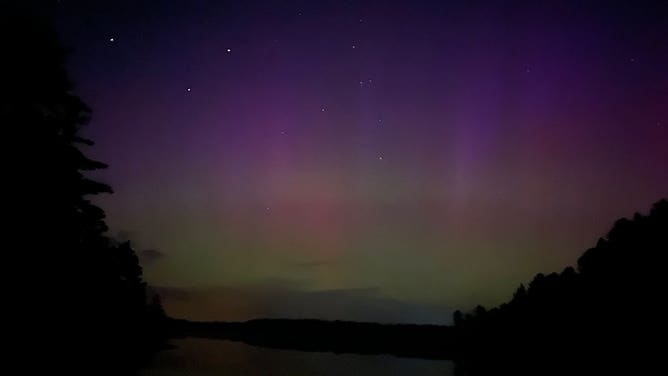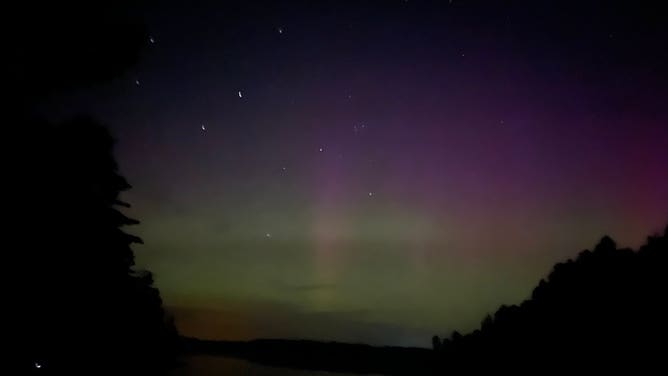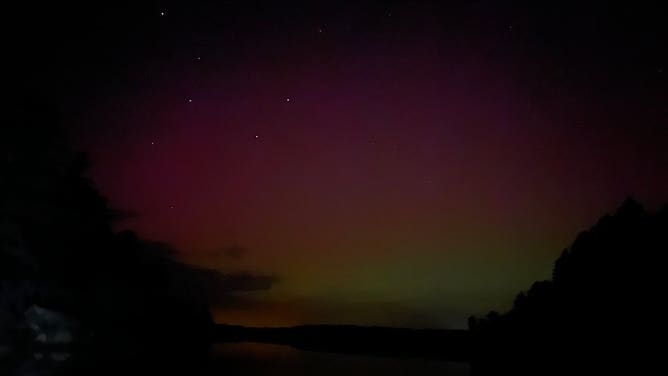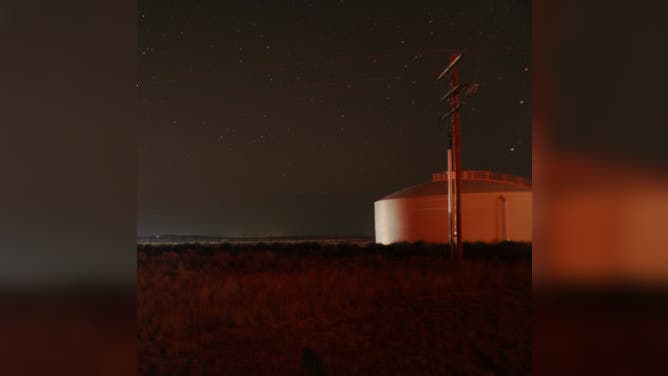Geomagnetic Storm Watch extended as chances for Northern Lights continue this week
Space weather forecasters anticipate more energized particles from the Sun arriving at Earth through Thursday, with possible G2 (moderate) solar storm impacts Wednesday and Thursday. Under the best conditions, the Northern Lights could be visible as far south as Iowa and Oregon.
Northern lights could be visible in the US through Thursday
NOAA space weather forecasters have extended the Geomagnetic Storm Watch through Thursday due to energized particles from the Sun heading toward Earth from coronal mass ejections. These reactions could create aurora lights across parts of the northern U.S. and Upper Midwest.
An ongoing geomagnetic storm will continue to bring displays of Northern Lights to Canada, the northern U.S. and Midwest through the rest of the week as the Sun releases rounds of energy with a trajectory toward Earth.
NOAA’s Space Weather Prediction Center (SWPC) in Boulder, Colorado, first issued a Geomagnetic Storm Watch on Monday, alerting of a potential G3 (strong) solar storm on Tuesday. The SWPC has continued the watch through at least Thursday as space weather forecasters continue to watch several areas of sunspot groups capable of producing more coronal mass ejections (CME).
Space weather forecasters said the watch was issued after solar activity was elevated through the weekend with multiple solar flares and associated CMEs.
The SWPC anticipates the Earth-directed CME components arriving through Thursday, with possible G2 (moderate) solar storm impacts on Wednesday night and Thursday morning.
7 FACTS ABOUT THE NORTHERN LIGHTS
The charged particles of a CME create the beautiful dancing lights known as Aurora Borealis or the Northern Lights. These lights are typically only seen near the North Pole, but during more intense solar storms, they can be seen as far south as the southern U.S., such as what was seen earlier this summer during the strongest geomagnetic storms in 20 years.
Early Tuesday, faint Northern Lights were seen near Riverton, Wyoming, according to the local National Weather Service office. Aurora lights were also visible in Ontario, Canada, on Tuesday.
When is the best time to see Northern Lights?
With the current forecast, the Northern Lights will likely be within view again Wednesday night and Thursday morning.
"We've got two coronal mass ejections heading towards us, and they are expected to merge," NASA ambassador Tony Rice said, adding this is known as a "cannibal CME" when one event overtakes another.
Coast-to-coast aurora lights could dazzle northern U.S.
NASA Ambassador Tony Rice joins FOX Weather to talk about the potential to see Northern Lights this week across the U.S. due to geomagnetic storms in the forecast.
Scientists use the Kp-index to characterize the magnitude of geomagnetic storms, and the SWPC uses it to decide whether it issues geomagnetic storm alerts. The greatest Kp-index levels are forecast to happen Wednesday night into Thursday morning, reaching 5 out of 9 on the geomagnetic storm scale. Early Tuesday, the Kp recorded was a 5 with minor to moderate geomagnetic storming.

Solar storm forecast based on the KP-index through Friday.
(FOX Weather)
THESE ARE THE 5 CATEGORIES THAT MEASURE GEOMAGNETIC STORMS
"Should the forecast conditions occur during the late evening hours, the aurora could become visible at times as far south as the northeast U.S. through the upper Midwest and across the rest of the northern states to include northern Oregon," the SWPC said.
What are the viewing conditions in the US for viewing the aurora lights?
As we approach a new Moon at the beginning of August, there won’t be as much moonlight to compete with any Aurora lights. However, cloud cover and wildfire smoke in the West will be the most significant contributing factor to visible lights where you live.

Aurora-viewing forecast with cloud cover and wildfire smoke for Wednesday night.
Under strong geomagnetic storm conditions, the Northern Lights can be visible in places such as Illinois, Wyoming and Iowa. The cloud cover in the Upper Midwest and Northeast will create fair to poor viewing conditions.
Another active sunspot region is expected to be Earth-facing in the coming days, which could produce more solar flares and CMEs. Stay with FOX Weather for your updated aurora viewing forecast.





